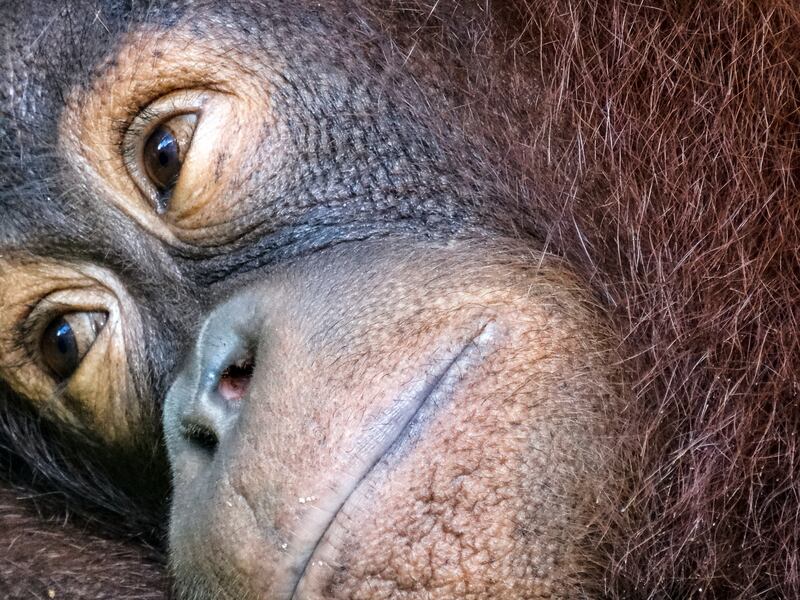There is already a buzz in the air as we walk towards the feeding area at the Sepilok Orangutan Rehabilitation Centre, which sits on the fringes of the Bornean rainforest.
On a raised wooden platform, a couple of female orangutans are playing with their young. They are restless little things, eagerly jumping up and down, and keen to practise their tree-climbing skills. Their mothers, meanwhile, seem to want to get some rest before the frenzy of feeding begins.
Suddenly, the forest canopy takes on a life of its own, as a flash of orange appears in the distance. A huge male orangutan, Malin, as he has been named, scuttles nimbly across tree branches and connecting cables, swinging his way towards the platform. Malin knows it is time for his breakfast. And soon enough, an official comes by with a crate filled with bananas, papayas and coconuts.
At the age of 21, Malin is in peak adult form. Knowing this, the protective mothers grab their curious children and move to one side of the platform. But there is enough food here for everyone, including the noisy troop of pig-tailed macaques that emerge seemingly out of nowhere as soon as the crate is emptied out. The females and children move away after they have had their fill, but Malin enjoys his feast slowly and thoroughly, confident in his unchallenged authority.
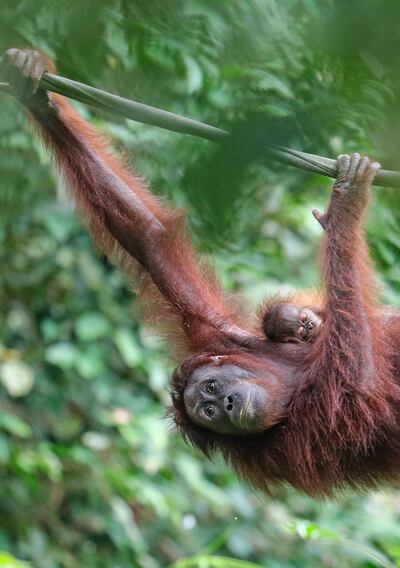
In the Malay language, orangutan means “man of the forest”, which makes perfect sense as we watch Malin breaking open a coconut and digging into the sweet flesh. This welfare organisation in the small town of Sepilok in the Malaysian Borneo state of Sabah has been taking care of orphaned and injured orangutans since 1964. It is now home to more than 60 of these great apes, who share 97 per cent of their DNA with humans.
The best part of this experience is the chance to watch orangutans at close quarters not in a zoo, but in a semi-wild area where the primates are free to come and go as they please. The eventual goal is to have them reintegrated in the wild, where they truly belong.
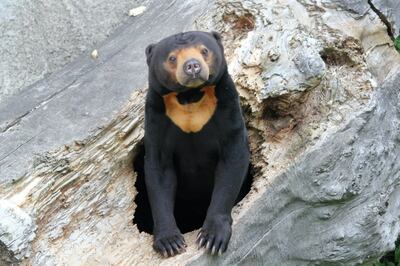
Across the road is the Bornean Sun Bear Conservation Centre, which aims to do the same for the smallest bear species in the world. Sun bears, some no larger than an adult Labrador, are only found in certain parts of South-east Asia, and are classified as “vulnerable”, as a result of rampant poaching and a steady loss of habitat. This centre was founded by wildlife biologist Wong Siew Te as a place to nurture sun bears rescued from captivity, primarily from homes where they are kept illegally as pets.
The small team of staff and volunteers work to rehabilitate the creatures, slowly teaching them survival skills. From the viewing platforms above the forest floor, I spot several of the black bears sniffing and foraging for fallen fruit and unsuspecting insects. Wong knows each of them by name, and describes their unique characteristics with great fondness. Here too, it is time for the morning feed. As one of the volunteers comes along with a fruit bucket, the bears gather around, a few of them standing on their hind legs in anticipation.
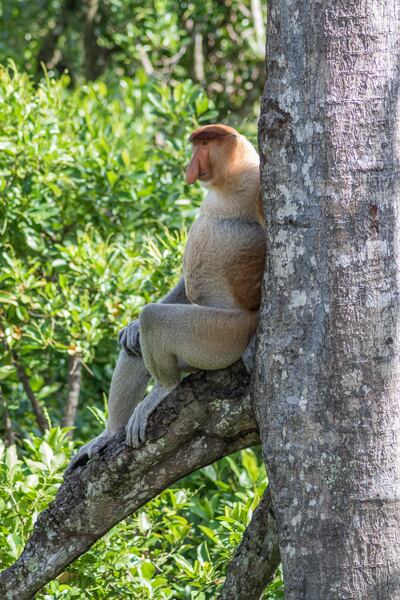
There are dozens of macaques jumping around, competing with the bears for food. But later in the afternoon, we head out to look for a more uncommon simian, the endangered proboscis monkey. They are usually found along rivers and in mangrove forests, and Labuk Bay Proboscis Monkey Sanctuary close to Sepilok offers a safe space for them to thrive in, even as their numbers are diminishing in the open forests.
The long bulbous noses and protruding bellies of the males make them look like serious, serene old men as they sit quietly staring into space. But the minute they begin to scamper about in groups, they become comical, playing raucous games of catch with each other.
While undeniably enjoyable, these experiences feel like a rather tame introduction to Borneo’s rainforest, a purposeful move to to make them appealing for all kinds of travellers, including families with small children. For a more authentic experience, I opt for a night walk at the Rainforest Discovery Centre in Sepilok. Part of the Kabili-Sepilok Forest Reserve, this nature park has several jungle trails, and a fascinating canopy walkway — called the Rainforest Skywalk — high above the ground.
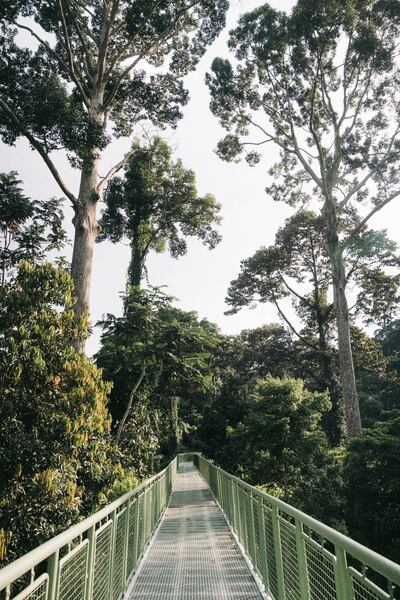
I am hoping to catch a glimpse of a stray orangutan in the wild, or even a tarsier, a tiny primate with huge, beguiling eyes. This is not to be, but I do see giant red flying squirrels gliding gracefully from treetop to treetop. As the sun sets and darkness takes over, the cacophony of birds gives way to a chorus of cicadas.
The next morning, I go back to hike the area's longer trails and see the Sepilok Giant, a typical lowland rainforest tree growing to a height of 65 metres. The canopy bridge, with panoramic views of the dense rainforest sprawling in all directions, is an even more enjoyable experience in the daylight. My sweaty jungle hikes are rewarded with rich sightings of oriental pied hornbills and blue-throated bee-eaters. I also catch sight of another glider, the elusive colugo, known as the flying lemur, cleverly camouflaged in tree bark. All in all, it's a successful introduction to Sepilok's wild side.
